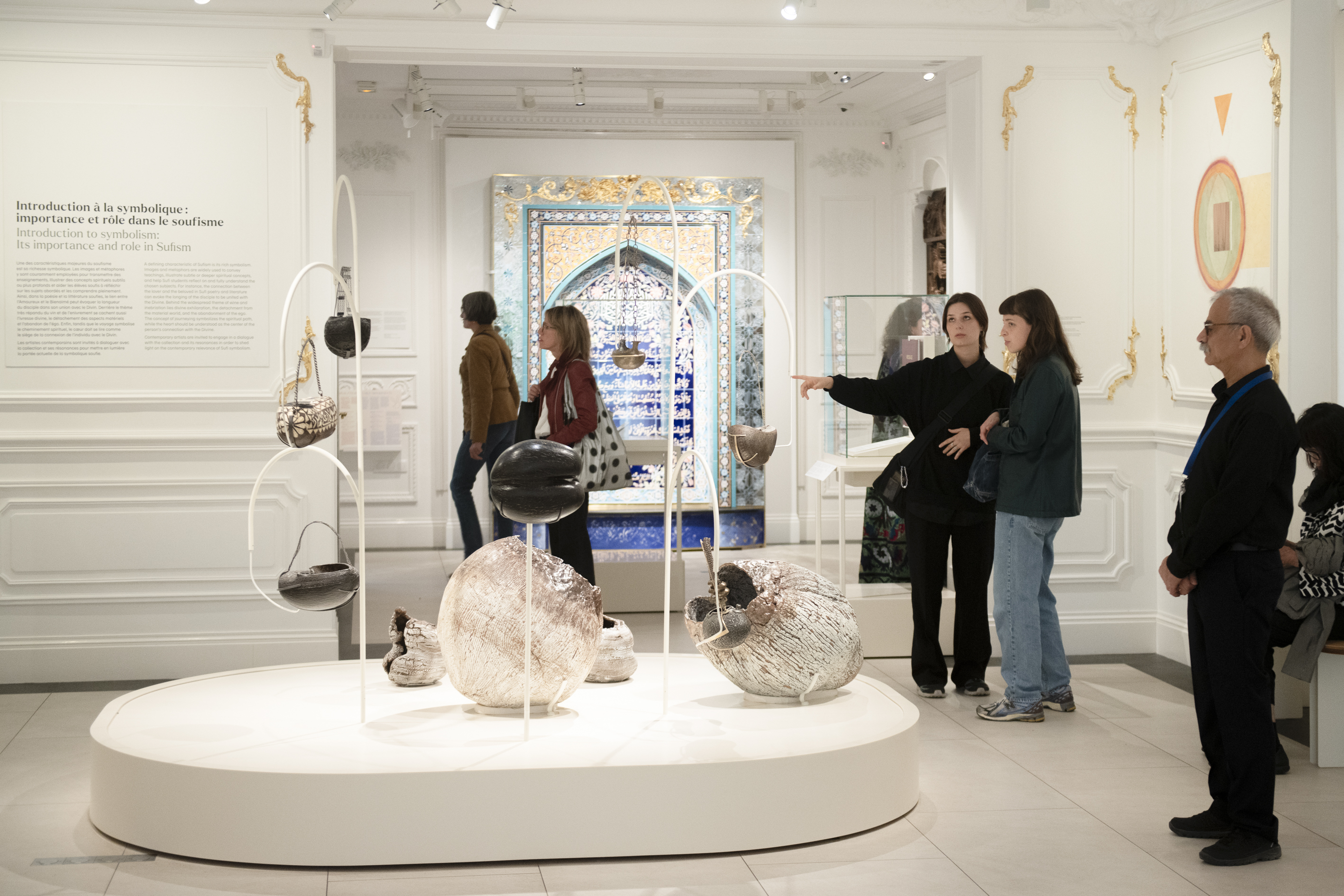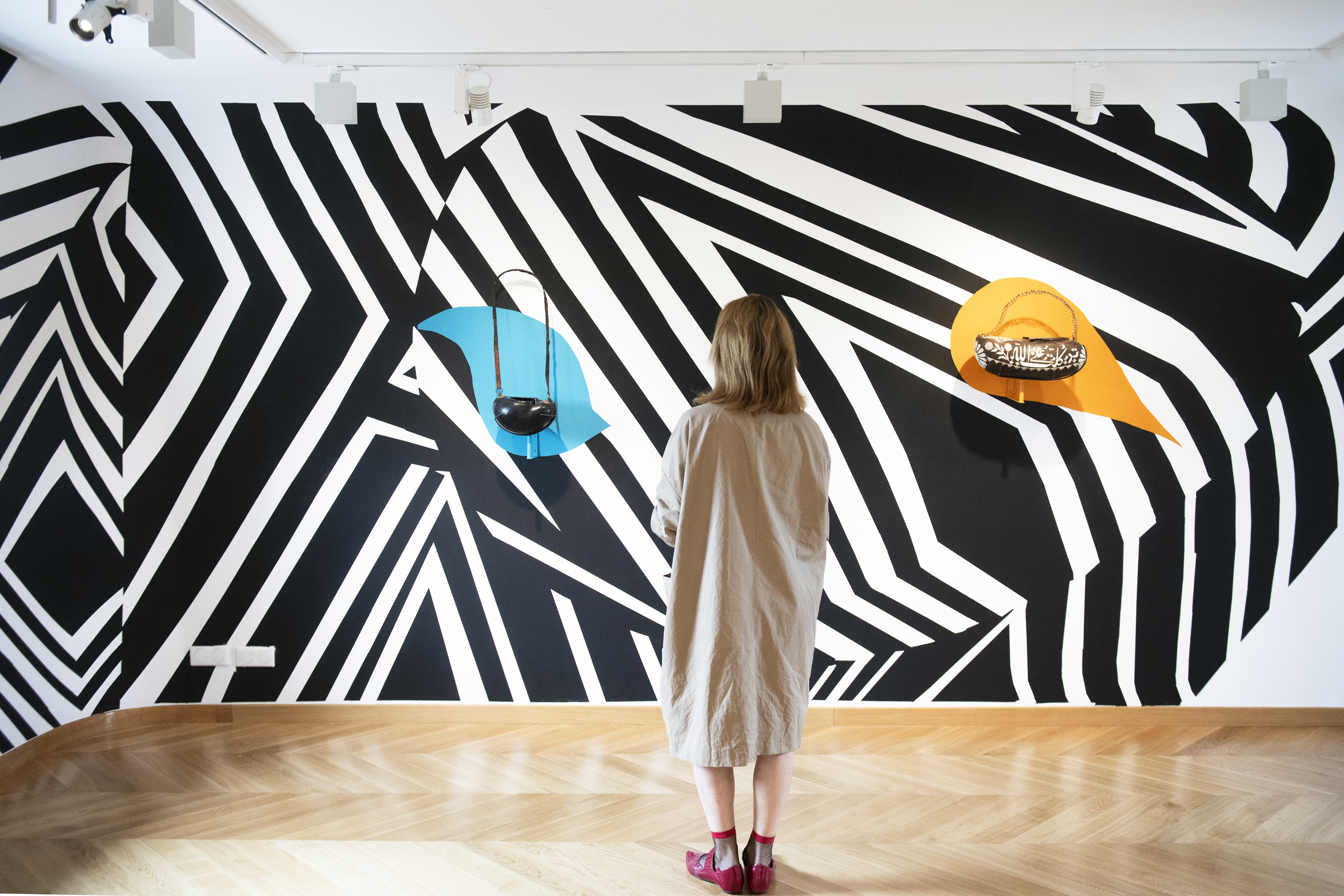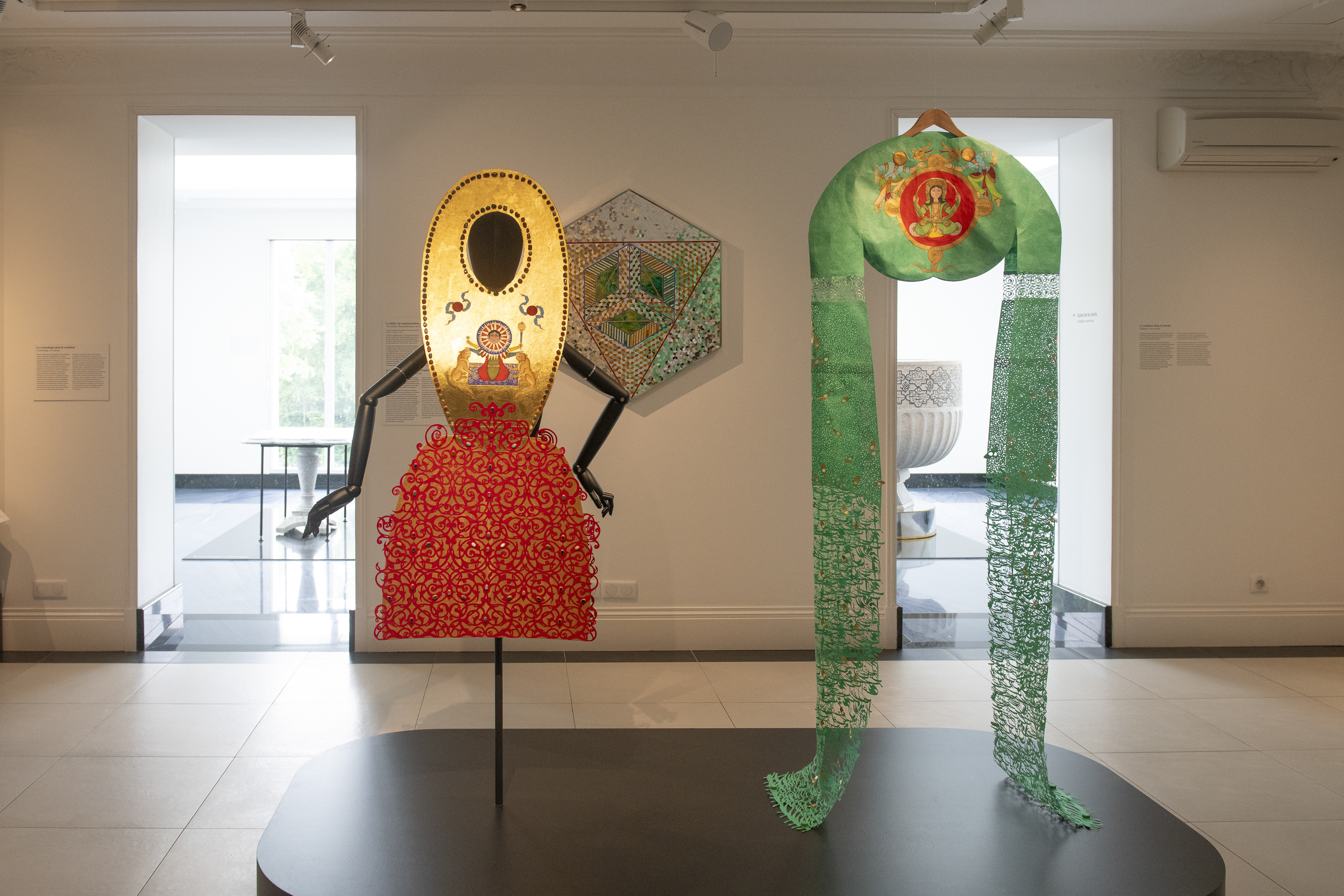Resonant: Bodies, Songs and Strings
Musée d’Art et de Culture Soufis MTO6 Av. des Tilleuls
78400, Chatou
from June 6, 2025 to January 4, 2026





French version
This exhibition weaves together echoes, vibrations, transmissions, and shared energies between Sufism and contemporary artistic practices. At its heart lies the setâr—a lute with fine and delicate strings – embraced by Sufis as a symbol of refinement and inner cultivation (letâfet in Arabic, Persian, and Turkish), and a vessel for spiritual transformation.
A resonant body, the setâr becomes metaphor: a vibrating heart stretched between heaven and earth. It inspires the exhibition to attune itself to the vibratory nature of emotion and to the social and ecological processes of healing, preservation, and transmission. Through diverse modes of listening—oral traditions, rituals, dreams, visions, and song—the body is understood as a vessel: a carrier of forgotten histories and an encoder of embodied knowledge.
Featuring objects and practices that exist at the intersection of art, care, spirituality, and sonic thinking, the exhibition engages with sound that exceeds the merely audible. It invites a deeper, more sensorial form of listening—one that is intimate, intuitive, and transformative.
The museum building itself can be seen as a resonant body: a unique sonic architecture in dialogue with the nature that surrounds it. The flowing Seine, the symbolic geometry of the garden, and the presence of aromatic and medicinal plants create a constellation of sensory connections. These elements invite the public to open their perception—to imagine their own bodies as instruments, as mediums for embodied, situated, and active listening.
Artists : Rada Akbar, Nevin Aladağ, Brook Andrew, Meris Angioletti, Katy’taya Catitu Tayassu, Paula Valero Comín, JJJJJerome Ellis, Célia Gondol, Yoshimi Futamura, Guadalupe Maravilla, Marie-Claire Messouma Manlanbien, Sara Ouhaddou, Vesna Petrešin et Charwei Tsai.
Curated by Elena Sorokina and Simona Dvorak
Curatorial advisors: Nataša Petrešin-Bachelez and the Initiative for Practices and Visions of Radical Care
Curatorial Assistant: Marion Mille
Exhibition Coordination: Golzar Yousefi, Amina Ait Ali
Scenography: Zeynep Inanc
Graphic Design: Christophe Clarijs
Photo credits:
Frédéric Poletti